Table of content
Tea eggs, a beloved snack deeply rooted in Asian culinary traditions, have captivated taste buds worldwide with their harmonious blend of earthy, aromatic flavors and tender textures. These marbled treasures, often sold by street vendors and enjoyed at family gatherings, are surprisingly simple to prepare at home. This comprehensive guide will walk you through the intricacies of creating tea eggs that are not only delicious but also visually stunning, with their signature spiderweb-like cracks and rich, dark hues. Whether you’re a novice cook or a seasoned home chef, mastering this recipe will equip you with a versatile dish that can be served as a snack, appetizer, or even a breakfast staple.
The Essence of Tea Eggs: A Brief Cultural Overview
Originating in China, tea eggs (cha ye dan in Mandarin) have a history spanning centuries, with references dating back to the Qing Dynasty. Initially, they were a practical solution for preserving eggs using tea’s natural tannins and spices, which acted as preservatives. Over time, they evolved into a culinary delight, cherished for their balance of savory, sweet, and slightly bitter notes. Today, tea eggs are embraced across Asia and beyond, with regional variations incorporating local spices and teas. Their enduring popularity lies in their simplicity—a humble ingredient transformed into something extraordinary through time, patience, and the alchemy of flavor.
Ingredients: The Foundation of Flavor
To embark on your tea egg journey, gather the following ingredients. Each component plays a pivotal role in shaping the final taste, so precision and quality are key.
- Eggs (6–8 large): Freshness is crucial. Opt for organic or free-range eggs for a richer yolk.
- Black Tea (2 tablespoons): Use loose-leaf Lapsang Souchong, Pu-erh, or English Breakfast tea. Avoid flavored teas, as they may clash with the spices.
- Spices:
- Star Anise (2–3 pods)
- Cinnamon Stick (1 small piece)
- Sichuan Peppercorns (1 teaspoon)
- Cloves (4–5)
- Black Cardamom (1 pod, optional)
- Soy Sauce (1/4 cup): Use dark soy sauce for deeper color, or a blend of light and dark.
- Salt (1 tablespoon): Enhances the umami notes.
- Sugar (1 teaspoon): Balances the bitterness of the tea.
- Water (6 cups): Enough to submerge the eggs and spices.
Optional Additions:
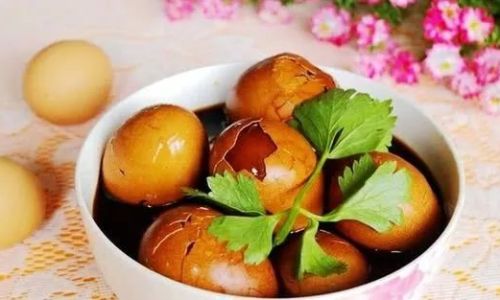
- Dried orange peel or tangerine peel (1 strip) for citrusy brightness.
- A slice of fresh ginger (1-inch) for warmth.
- A dash of rice wine or Shaoxing wine for complexity.
Step-by-Step Preparation: From Boiling to Infusing
Cooking the Eggs: The First Crucial Step
Begin by gently placing the eggs in a single layer in a large pot. Cover them with cold water, ensuring there’s at least an inch of water above the eggs. Bring the water to a rolling boil over medium-high heat. Once boiling, reduce the heat to a simmer and cook for 8–10 minutes. This timing yields a slightly soft yolk; for a fully set yolk, extend to 12 minutes.
Pro Tip: Adding a teaspoon of baking soda to the water can make the shells easier to peel later, though this step is optional.
The Ice Bath: Preserving Perfection
Immediately transfer the cooked eggs to a bowl of ice water. Let them sit for 5 minutes, or until cool enough to handle. This rapid cooling halts the cooking process and prevents the yolks from developing a grayish ring. It also firms up the whites, making the eggs less fragile during the cracking step.
Cracking the Shells: The Art of Marbling
This is where the magic begins. Using the back of a spoon, gently tap each egg all over to create a network of fine cracks. The goal is to fracture the shell without removing it. Aim for a spiderweb pattern, ensuring the cracks are even but not too deep. Alternately, roll the egg on a hard surface while applying light pressure.
Why This Matters: The cracks allow the tea and spice mixture to seep into the egg, creating the signature marbled appearance and infusing the whites with flavor.
Preparing the Infusion Broth
In a separate pot, combine the water, tea leaves, spices, soy sauce, salt, and sugar. Bring the mixture to a simmer over medium heat, stirring occasionally to dissolve the salt and sugar. Once simmering, reduce the heat to low and let the broth steep for 10–15 minutes. This step extracts the full flavor from the tea and spices.
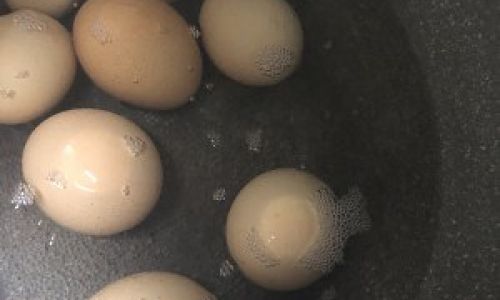
Flavor Customization: For a smokier profile, add a smoked paprika or a piece of smoked salt. For heat, include a dried chili or a pinch of red pepper flakes.
Simmering the Eggs: The Infusion Process
Carefully add the cracked eggs to the simmering broth, ensuring they are fully submerged. If needed, add more water to cover. Bring the liquid back to a gentle simmer, then reduce the heat to low. Simmer the eggs for 1–2 hours, adjusting the time based on your desired flavor intensity.
The Longer, The Better: While 1 hour suffices for mild flavor, extending to 2 hours deepens the taste and color. For an even richer result, turn off the heat after simmering and let the eggs steep in the broth overnight in the refrigerator.
Final Touches: Cooling and Serving
Once the eggs have steeped to your liking, remove them from the broth using a slotted spoon. Allow them to cool slightly before peeling. The shells should come off easily, revealing the intricate marbling beneath.
Serving Suggestions:
- As a Snack: Serve warm or at room temperature with a sprinkle of sesame seeds or chopped cilantro.
- In Salads: Slice eggs into wedges and toss with mixed greens, cherry tomatoes, and a sesame dressing.
- With Noodles: Halve eggs and place atop a bowl of ramen or soba noodles.
- For Breakfast: Pair with congee (rice porridge) or toast for a protein-rich start to the day.
Troubleshooting Common Pitfalls
-
Eggs Not Marbling Properly:
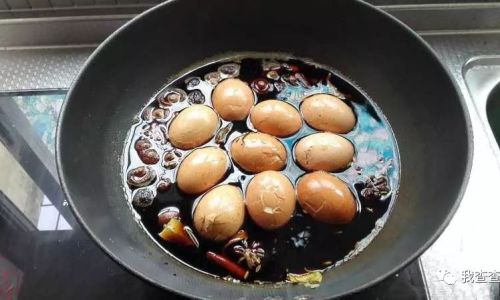
Ensure the shells are cracked thoroughly but gently. If the cracks are too sparse, the marbling won’t develop.
-
Flavor Too Weak:
Increase the simmering time or add an extra tablespoon of soy sauce and a pinch of salt.
-
Flavor Too Overpowering:
Reduce the spice quantities or dilute the broth with water.
-
Eggs Overcooked:
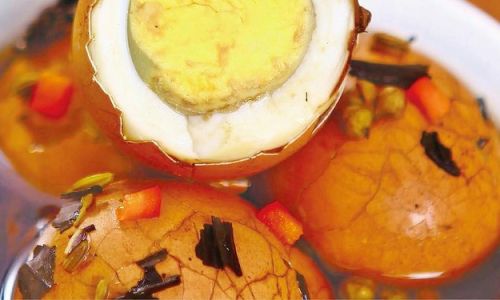
Monitor cooking time closely. For soft yolks, aim for 8 minutes; for hard yolks, 10–12 minutes.
Storage and Reheating
Tea eggs can be stored in their broth in an airtight container in the refrigerator for up to 5 days. To reheat, gently simmer them in the broth for 5 minutes or microwave on low power. Avoid freezing, as this alters the texture.
Health Benefits and Nutritional Notes
Tea eggs are a nutritious snack, offering protein, vitamins (B12, D), and minerals (iron, selenium) from the eggs, along with antioxidants from the tea. However, they are high in sodium due to the soy sauce, so moderation is advised for those on low-sodium diets.
Exploring Variations: Beyond the Classic
- Vegetarian Version: Substitute soy sauce with tamari or coconut aminos, and use vegetable broth instead of water.
- Spicy Tea Eggs: Add sliced fresh chilies or a dash of chili oil to the broth.
- Herbal Tea Eggs: Experiment with herbal teas like chamomile or hibiscus for a floral twist.
- Mushroom Tea Eggs: Infuse the broth with dried shiitake mushrooms for umami depth.
Conclusion: The Joy of Patience and Craftsmanship
Crafting tea eggs is a meditation on patience—a dance between time, temperature, and taste. Each crack in the shell tells a story of anticipation, and every bite rewards the cook with a symphony of flavors. Whether you’re recreating a childhood memory or embarking on a culinary adventure, mastering tea eggs is a testament to the beauty of simplicity elevated by intention. So boil, crack, simmer, and savor the results of your labor. Your taste buds—and those you share with—will thank you.
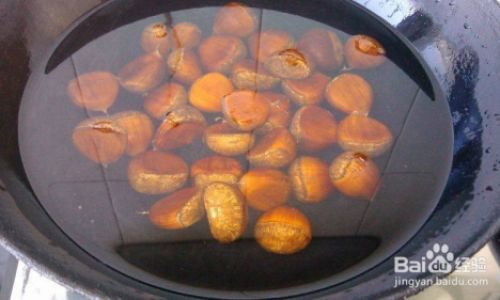
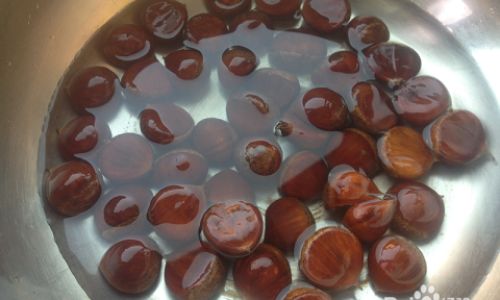
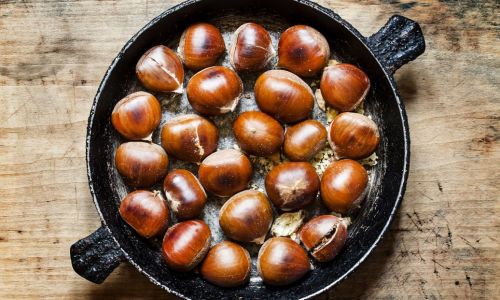


0 comments